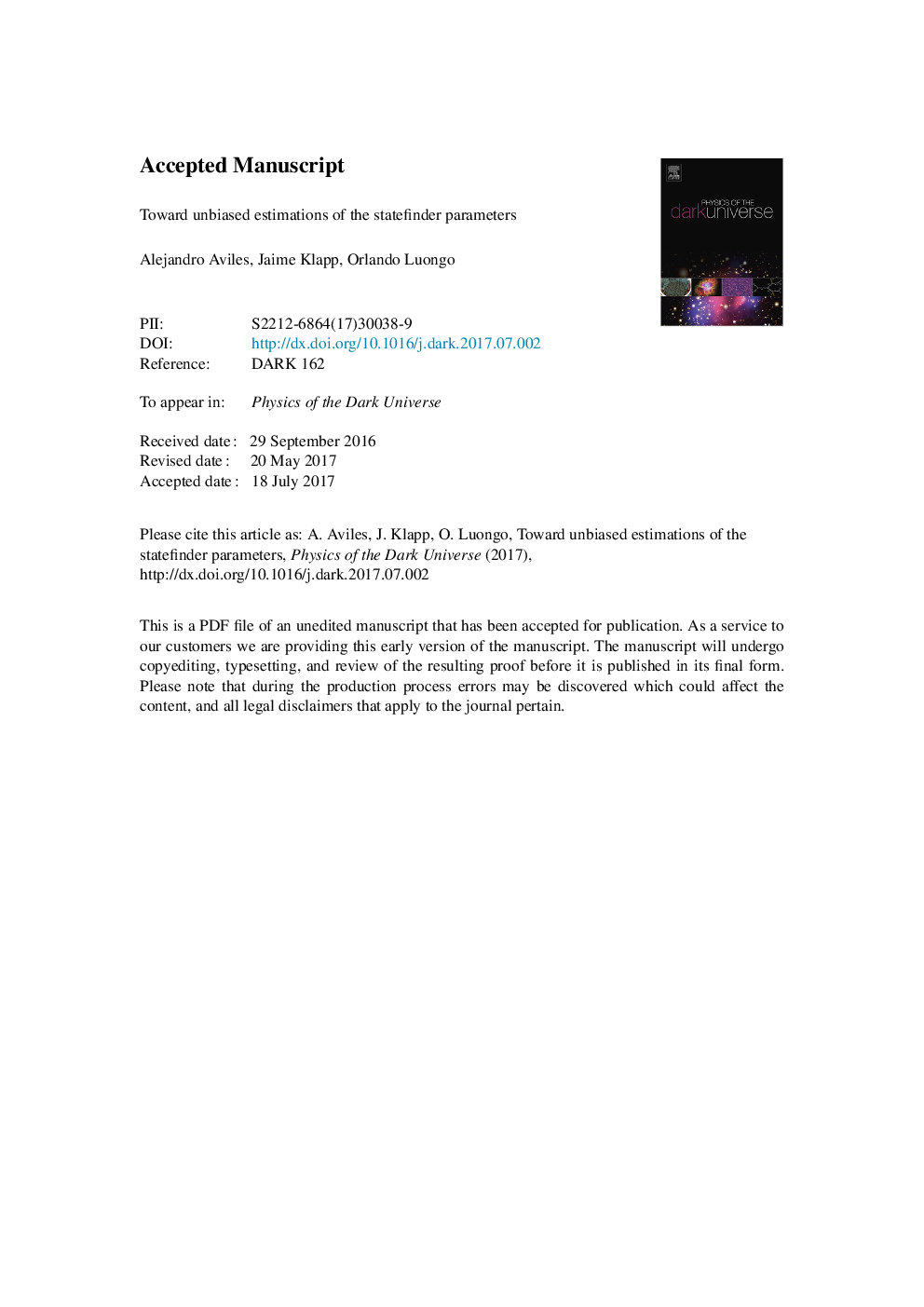| Article ID | Journal | Published Year | Pages | File Type |
|---|---|---|---|---|
| 5487867 | Physics of the Dark Universe | 2017 | 18 Pages |
Abstract
With the use of simulated supernova catalogs, we show that the statefinder parameters turn out to be poorly and biased estimated by standard cosmography. To this end, we compute their standard deviations and several bias statistics on cosmologies near the concordance model, demonstrating that these are very large, making standard cosmography unsuitable for future and wider compilations of data. To overcome this issue, we propose a new method that consists in introducing the series of the Hubble function into the luminosity distance, instead of considering the usual direct Taylor expansions of the luminosity distance. Moreover, in order to speed up the numerical computations, we estimate the coefficients of our expansions in a hierarchical manner, in which the order of the expansion depends on the redshift of every single piece of data. In addition, we propose two hybrids methods that incorporates standard cosmography at low redshifts. The methods presented here perform better than the standard approach of cosmography both in the errors and bias of the estimated statefinders. We further propose a one-parameter diagnostic to reject non-viable methods in cosmography.
Keywords
Related Topics
Physical Sciences and Engineering
Physics and Astronomy
Astronomy and Astrophysics
Authors
Alejandro Aviles, Jaime Klapp, Orlando Luongo,
